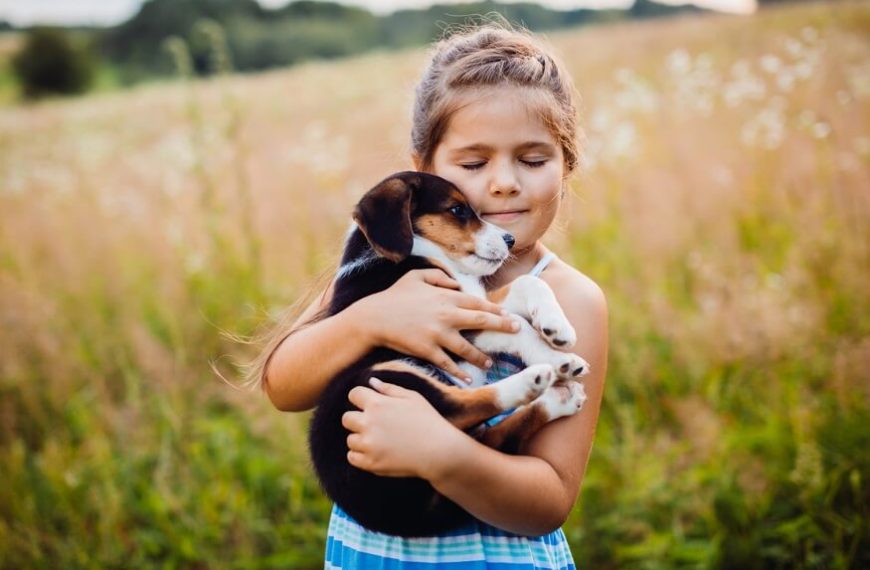The importance of love for animals cannot be emphasised enough. It may sound far-fetched but animals do an amazing job when it comes to helping children with shyness, ADHD and inattentive families. We are familiar with the role that dogs and even cats play in bringing out the best in children, but even animals like hamsters and hens play a significant role. It’s not an unusual sight to see children comforting, feeding or looking after their daily needs, demonstrating kindness to animals in their day-to-day interactions.
It’s actually sad when children don’t have the privilege of a pet in their lives as they are missing out on a vital connection and the opportunity to develop the soft skills of life like compassion, empathy, responsibility, respect and love for animals. They develop respect and awareness for nature and there is a significant increase in their motivation to help others. Children with pets feel more connected to animals in general.
Importance of Being Compassionate and Kind to Animals
- Empathy is a very underrated character trait but it’s something that should be cultivated in a child as it gives them a strong emotional foundation and the realisation that everything is connected in Nature.
- Children with pets show a sense of well-being, less aggression and a better quality of life as they learn love and care for animals .
- Such children show more humane behaviour towards other animals and humans as well. They are less violent and research shows that people involved in violence like stabbings and shootings, more often than not have indulged in animal abuse in their childhood.
- Children have to be taught to respect, empathise and take care of nature so that it continues in adulthood and influences conservation in the future. Researchers have found that a person who hasn’t learnt empathy for animals in childhood doesn’t find it necessary to conserve the environment later in life. It also makes them more social and happier individuals.
Ways to Bring Animals Into Your Child’s Life
It’s not always possible to have a pet but there are many other ways to introduce animals into your child’s life and teach children to be kind to animals as the importance of love for animals is paramount.
Companion Animals
It’s a beautiful gesture when you give a compassionate home to an animal and you should always adopt from a shelter. So many animals are put to sleep in shelters just because they are not adopted. You can also foster an animal temporarily or volunteer to take care of shelter animals. Chores like cleaning cages, walking friendly animals or feeding them is a great way to inculcate compassion.
Farm Animals
In some places children can volunteer to help take care of farm animals as a community service. Kids can develop a sense of responsibility and compassion by helping to clean stalls and feed the animals.
Horses
It may not always be accessible but horse riding is an excellent way to develop compassion and empathy as it requires your child to cooperate and communicate with a non-verbal partner. Horses are sensitive animals and sense the emotions of the rider. Riding also reduces stress levels, strengthens muscles and improves balance, posture and coordination while developing patience, responsibility and discipline.
Also Read – List of animals live on land and water
Inculcating Compassion for Animals
Begin at Home
Your behaviour towards a stray dog or cat goes a long way in teaching compassion, empathy and kindness to your kid. If you throw a stone at them or shoo them away, you are unknowingly teaching your child the same behaviour. Also, referring to someone as a dog, pig or donkey sends a wrong message to your child. Sensitising them about how to care for and treat animals is the way to go. This way you will inculcate a sense of empathy in them towards animals and teach children to be kind to animals.
Volunteering with Pet Chores
Encourage your child to volunteer and care for injured or abandoned animals. Educate them on animal abuse and allow them to learn about their requirements. They should also be taught to look after the needs of their own pet or pet sit their neighbour’s pets from time to time. Help your child to notice their pet’s basic needs, how they are different or similar from us and how they communicate their emotions to us.
Visit Wildlife Centres
Sanctuaries and zoos are a great way for children to observe the animal world. They can also go on a hike and pay attention to the animals and birds they see along the way. They realise the value of protecting animals when they see them in their natural habitat and environment. Also, observing them from a distance without disturbing them is a good way of learning to respect their space and teach children to be kind to animals.
Read More
Read them books and show cartoons with animals as the main characters. This helps them to relate to the feelings and issues of these characters and empathise with them. They develop an appreciation for the animal kingdom and learn to care for it.
Clubs and Activities at School
A positive attitude towards animals begins at home but can be reinforced in school. They can conduct activities that promote curiosity and awareness about animal rights which develops compassion. A Nature Club can organise discussions and debates with students about animal issues and respect for the natural environment while instilling love and care for animals.
Role Play
This is perfect for very young children to learn compassion as they can indulge in pretend play as they care for their stuffed animals. Talk to them about how their ‘pet’ is feeling and what it needs. You can also take them to a pretend zoo in your house and talk to them about how they are cared for in a zoo.
Research shows that violent and cruel behaviour is learnt behaviour and those who are cruel to animals in their childhood continue with this behaviour towards others in their adulthood. That’s what makes it so important to teach children compassion for animals so that they grow up to be compassionate and sensitive adults with respect for fellow living beings.
















